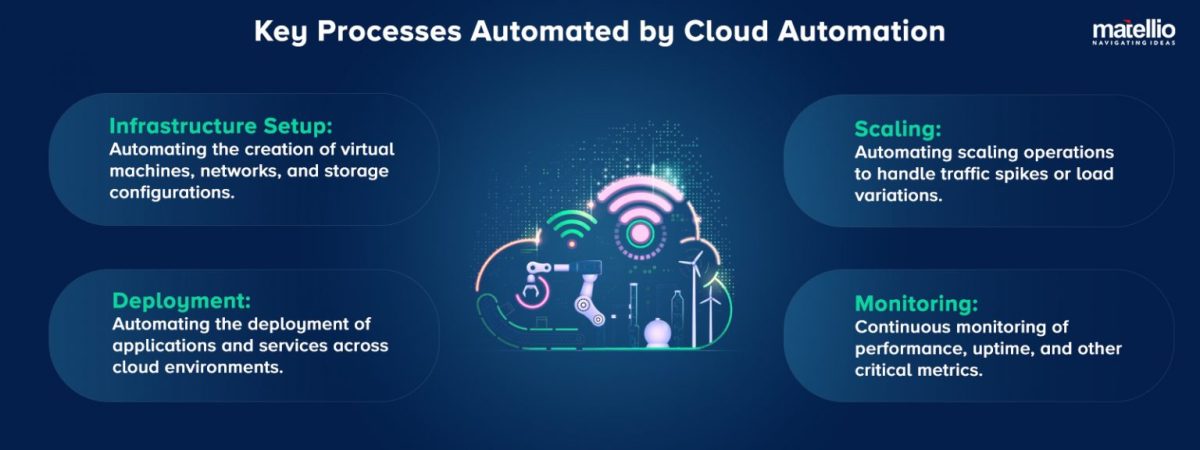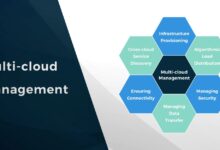Cloud Automation Software: 15 Powerful Tools You Must Know
Looking to simplify your cloud operations? Cloud automation software might just be your new best friend.
Understanding Cloud Automation Software

Cloud automation software refers to the tools and platforms that streamline and automate the management, deployment, and scaling of cloud resources. These solutions help businesses reduce manual intervention, minimize errors, and accelerate cloud operations.
What is Cloud Automation?
Cloud automation is the use of software tools and technologies to perform tasks in cloud environments with minimal human intervention. These tasks include provisioning servers, managing storage, configuring networks, and deploying applications.
- Automates repetitive cloud tasks
- Reduces human error
- Speeds up deployment processes
Why It Matters Today
With the rise of multi-cloud and hybrid environments, managing cloud infrastructure manually is inefficient and error-prone. Cloud automation software ensures consistency, scalability, and faster time-to-market.
“Automation is no longer a luxury—it’s a necessity in modern cloud operations.” — Gartner
Key Benefits of Cloud Automation Software
Implementing cloud automation software brings a host of advantages that improve both operational efficiency and business agility.
Improved Efficiency
Automation eliminates the need for repetitive manual tasks, allowing IT teams to focus on strategic initiatives.
- Faster provisioning of resources
- Reduced operational overhead
- Streamlined workflows
Cost Optimization
By automating scaling and resource management, organizations can avoid over-provisioning and reduce cloud spend.
- Auto-scaling to match demand
- Shutting down unused resources
- Real-time cost monitoring
Enhanced Security and Compliance
Automation enforces security policies consistently across environments, ensuring compliance with industry standards.
- Automated patching
- Policy enforcement
- Audit trails and logging
Top Cloud Automation Software Tools in 2024
There are numerous cloud automation tools available, each catering to different needs. Below are some of the most powerful options in the market.
Terraform
Terraform by HashiCorp is a popular Infrastructure as Code (IaC) tool that allows users to define and provision infrastructure using a declarative language.
- Supports multiple cloud providers
- Reusable configurations
- Strong community support
Ansible
Ansible is an open-source automation tool by Red Hat designed for configuration management, application deployment, and cloud provisioning.
- Agentless architecture
- Simple YAML syntax
- Large collection of modules
Puppet
Puppet automates the delivery and operation of software across the entire lifecycle. It’s widely used in DevOps pipelines.
- Model-driven approach
- Strong reporting capabilities
- Integrates with major CI/CD tools
Jenkins + Cloud Plugins
Jenkins, when combined with cloud automation plugins, becomes a powerful CI/CD tool for automating deployments in cloud environments.
- Extensive plugin ecosystem
- Supports hybrid cloud setups
- Highly customizable
Chef
Chef is another powerful configuration management tool that helps automate infrastructure through code.
- Declarative language (Ruby-based)
- Supports testing and compliance
- Ideal for complex environments
Use Cases of Cloud Automation Software
Cloud automation software is used across various industries and functions to achieve different goals.
DevOps and CI/CD Pipelines
Automation tools are essential in DevOps for continuous integration and deployment.
- Automated code testing
- Infrastructure provisioning
- Deployment pipelines
Cloud Migration
Automation simplifies the migration of workloads from on-premise to cloud environments.
- Scripted migrations
- Automated validation
- Rollback strategies
Disaster Recovery and Backup
Cloud automation aids in setting up reliable disaster recovery and backup systems.
- Scheduled backups
- Automated failover
- Replication across regions
Challenges and Considerations
While cloud automation software offers numerous advantages, it also comes with its own set of challenges.
Complexity of Multi-Cloud Environments
Managing automation across multiple cloud providers can be complex and requires standardization.
- Different APIs and services
- Vendor lock-in risks
- Need for unified management
Skill Gaps
Implementing automation requires skilled professionals who understand both cloud architecture and scripting languages.
- Training requirements
- Hiring challenges
- Ongoing support
Security Risks
Improperly configured automation scripts can introduce vulnerabilities or lead to data breaches.
- Least privilege access
- Code reviews
- Audit logging
Future Trends in Cloud Automation
The future of cloud automation is promising, with emerging technologies enhancing its capabilities.
AI and Machine Learning Integration
AI-driven automation is expected to become mainstream, enabling predictive scaling and intelligent remediation.
- Self-healing systems
- Automated anomaly detection
- Smart resource allocation
Serverless Automation
Serverless computing is changing the way automation is implemented, focusing on event-driven architectures.
- Event triggers
- Function-based workflows
- Reduced infrastructure management
Policy-as-Code
Defining and enforcing policies through code will become a standard practice in cloud governance.
- Automated compliance
- Version-controlled policies
- Real-time enforcement
What is cloud automation software used for?
Cloud automation software is used to automate the provisioning, configuration, deployment, and management of cloud resources, reducing manual effort and improving efficiency.
Is cloud automation secure?
Yes, when implemented correctly with proper access controls, encryption, and monitoring, cloud automation can enhance security by enforcing consistent policies.
Which is the best cloud automation tool?
There’s no one-size-fits-all answer. Popular tools include Terraform, Ansible, and Puppet, each suited for different use cases and environments.
How does automation reduce cloud costs?
Automation helps optimize resource usage by scaling services up or down based on demand, shutting down idle resources, and monitoring usage in real-time.
Can small businesses benefit from cloud automation?
Absolutely. Cloud automation software can help small businesses streamline operations, reduce costs, and scale efficiently without large IT teams.
Cloud automation software is transforming the way organizations manage their cloud infrastructure. From improving efficiency and security to enabling DevOps and AI-driven operations, automation is the key to unlocking the full potential of the cloud. As the technology continues to evolve, adopting the right cloud automation tools will be crucial for staying competitive in a digital-first world.
Recommended for you 👇
Further Reading:









